This post may contain affiliate links. If you make a purchase through a link, I may receive a small commission, at no cost to you. These commissions help keep this website up and running, and I thank you for your support. Read my full disclosure here.
Disclaimer: This is not a sponsored post, I paid for this trip myself. All recommendations are my own.
My husband and I visited Plitvice Lakes as part of our two week holiday in Croatia. I was so excited to finally be visiting Croatia’s stunning Plitvice Lakes, as I had fallen in love with this place as soon as I had set eyes on pictures of the magnificent falls and bright turquoise waters. Part of me worried that it wouldn’t live up to my expectations, those photos just seemed too beautiful to be true, however, I needn’t have worried because this place really is amazing.
Plitvice is the largest national park in Croatia and a UNESCO World Heritage site. It’s made up of 16 stunning lakes connected by breathtaking waterfalls, azure waters, and stunning woodlands. However, don’t expect tranquillity. This place is very popular so you’ll find yourself sharing the park with a lot of tourists as this is one of the most visited sites in Croatia and attracts over a million visitors each year.
My husband and I visited Plitvice National Park as part of our two week holiday in Croatia. We flew into Rijeka in the afternoon, picked up our hire car, and drove the 2 hours to Plitvice National Park. The drive was very picturesque, leading us along winding coastal roads before heading up into the mountains. But as we neared the park it began absolutely bucketing down, so we didn’t get much of a chance to pull over and enjoy the views. We just crossed our fingers and constantly checked the rain radar and weather forecast in the hope that the sun would appear the next day.
By the next morning, the rain had thankfully cleared and the clouds were parting. As our accommodation was only a short distance to the north entrance 1, we walked down to buy our tickets and enter the park. However, if you are arriving by car it’s easy, there are two entrances and both are fairly close to one another on the same D1 road. The entrances are well signposted and hard to miss, especially as this is a very popular international tourist destination, so there are always lots of visitors swarming around and tour buses coming and going. If you don’t have a car, then don’t worry, Plitvice is accessible by bus from either Zadar or Zagreb, or you can take one of the many tours on offer.
At entrance 1, the parking is on one side of the road, along with a restaurant. To pay for the parking, there is a ticket machine and a manned booth operating during the busy hours. The park entrance is on the other side of the busy road, but it’s safely crossed using the pedestrian bridge. Beside the park entrance is a café selling rather average sandwiches and drinks. Food options are rather uninspiring in the park, so I would recommend taking a picnic lunch.
Although it was September, which is technically the shoulder season, the park was still incredibly busy. The line was fairly long at the entrance, despite getting there reasonably early, however, it didn’t take us too long to get through. As we headed into the park we were immediately greeted with the stunning views of the Great Waterfall, the largest fall in Plitvice Lakes and Croatia, the turquoise lower lakes, and the paths that appeared to float above the water.
Printed on the back of the ticket is a map of the park and there are also maps at the entrance points. There are six suggested walking paths that range from 2 – 3 hours to 6 – 8 hours. These routes are clearly displayed on the large billboards at the park entrances or you can plan out which route in advance on the Plitvice National Park website. All routes are clearly marked and labelled from A (the shortest) to K (the longest) with way makers along the path. Both boat and bus transport around the park are included in the ticket, which is great for those who can’t walk too far or have limited time.
We decided to head along the longest route in the hope of finding some quieter paths so we could really appreciate the beauty of the park. If your fitness is up to it, then I recommend route K as it will give you the opportunity to explore a large part of the park. However, first off we headed down to the most popular area, the Lower Lakes. This is where we found the famous Great Waterfall and the stunning crystal clear waters that are the most beautiful colours, ranging from blue to green depending on the quantity of minerals or organisms in the water and the angle of sun. Beneath the water were a variety of fish including trout, chub, roach, pijor, klen and crvenperka, and fallen trees that had calcified white. The path led on upstream, through the Lower Lakes canyon and along the lakes to Kozjak Bridge where the trail began to ascend towards the eastern side of the canyon. At this point you can return to the entrance, but we continued to explore more of the park.
There were so many beautiful falls in the park that we lost count. But these are very popular so we had to be very patient, waiting in line and moving at a shuffle which was a bit frustrating at times. However, as we headed deeper into the park and into the Upper Lakes, there were quieter, areas, and this is where we took our time to really enjoy the park and its outstanding beauty.
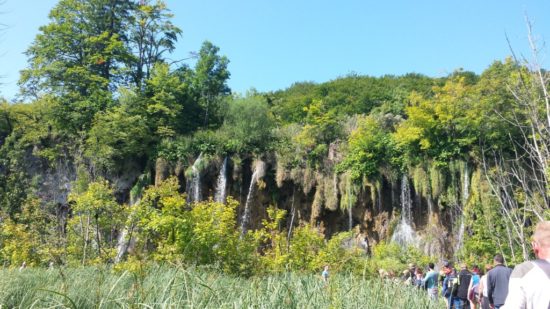
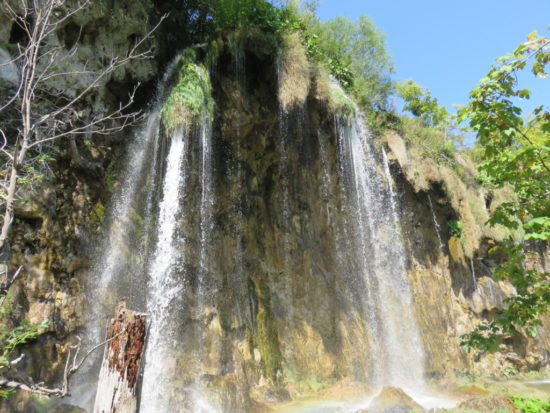
The only disappointing part of our visit was not being able to cool off in the beautiful waters. It looked so inviting, but alas, as it is a UNESCO World Heritage site swimming is not allowed here. However, if you have the time, I definitely recommend visiting the nearby Krka National Park which is very similar to Plitvice, but you can swim by the falls.
If you are staying overnight in Plitvice like we did, there is not much to do and see around the park. However, we were quite tired after a long day of walking, so that evening we enjoyed some delicious Croatian wine and trout at the local restaurant by the entrance. There are several local restaurants near both entrances to choose from. In addition, during the summer months many of the larger guesthouses offer food. For example, we stayed on Rastovača Road which had a several small restaurants that don’t come up on Google Maps.
Practical Tips for Visiting Plitvice National Park
- How long should I visit for? I recommend spending an entire day at Plitvice National Park if you can. Try to get there early in the morning to enjoy the popular Lower lakes before the crowds turn up.
- How to get there: Either hire a car or get a bus from Zadar or Zagreb which will drop you and pick you up from the park entrances. You can also get there by taking a tour from Split or Trogir, a tour from Zadar, a tour from Split, or a tour from Zagreb with a transfer onto Split.
- Park entry: Opening times and entrance fees vary depending on the time of the year, so check the Plitvice Lakes National Park website.
- Toilets: The toilets at Plitvice are free.
- Food: There are not many lunch options and the few that are there are not particularly exciting, so if you can, take a picnic and enjoy it in the park.
- Water: As it gets very hot here during the summer months, make sure you take plenty of water with you. You can purchase water at the entrance cafe’s.
- Swimming: As Plitvice is a UNESCO World Heritage site, no swimming is allowed. However, consider visiting the nearby Krka National Park where you can swim by the waterfalls.
- Language: Croatian. Although most people we came across spoke English in the tourist areas. However, do try your hand at a few Croatian words:
- Yes = Da (da)
- No = Ne (ne)
- Please = Molim (MOH-leem)
- Thank you = Hvala (HVAH-lah)
- Hello = Bok (bohk)
- Currency: Croatian Kuna – Take some Croatian Kuna with you to buy yourself a much needed ice cream and a cold beer!
- Tipping: Not required, but people usually round up.
- Electricity: The electrical current is 230 volts AC. Wall outlets generally take the European two round prong plugs. However, you are better off purchasing a worldwide adaptor that can be used in Croatia as well other countries. At least then you can potentially get some further use out of it on future vacations. If you’re taking a number of electronics with you, then I would recommend purchasing a couple of these adaptors.
- Navigating: We used Google’s free Offline Maps. Google Offline Maps allows you to access free maps for navigating that can be used offline i.e. you don’t need WIFI, data, or roaming to be able to use them. Follow this detailed guide on how to use Googles Offline Maps. Using your phone as a GPS will drain your battery quickly, so use a portable battery charger which you can use to charge your phone and any other USB chargeable devices. If you prefer a paper map, then purchase a Croatian road map before you go. At least it’s reliable and won’t run out of battery or malfunction like the electronic options!
Accommodation Options in Plitvice National Park
Search available accommodation in Plitvice National Park
Budget
Moderate
Luxury
For those of you looking for a unique experience staying at a horse ranch in the Croatian countryside, then stay at Linden Tree Retreat & Ranch.

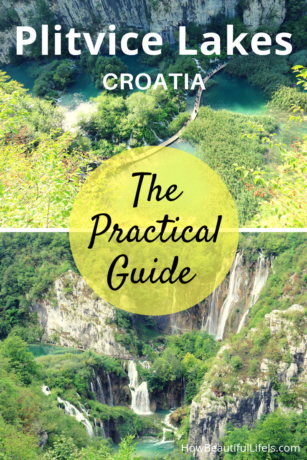
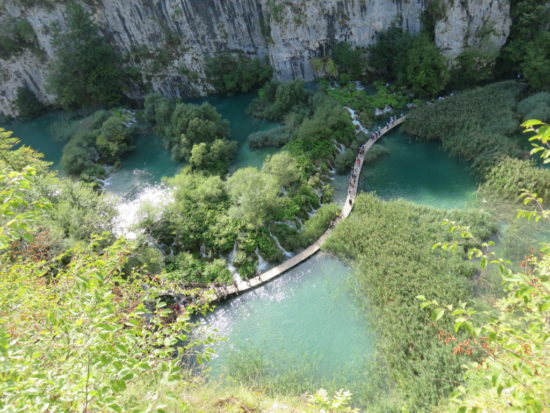
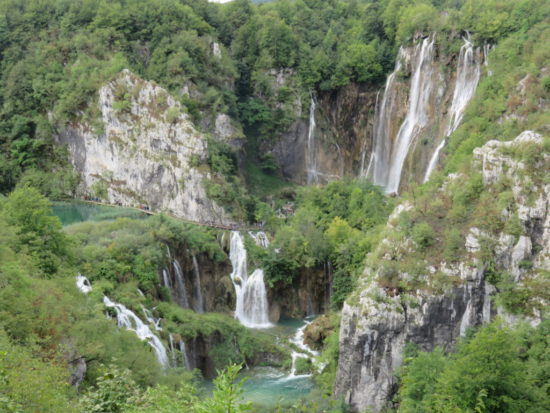
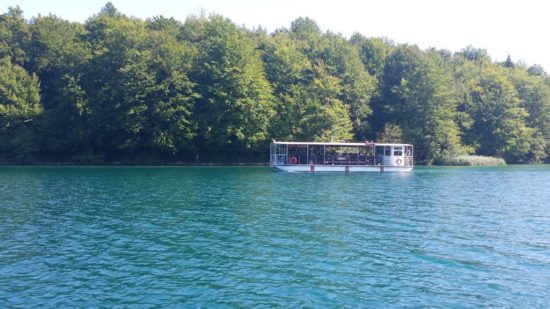
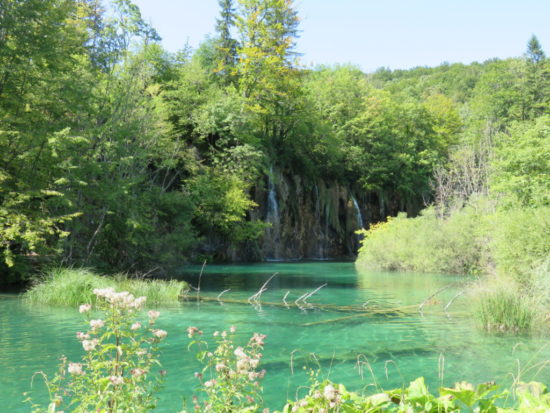
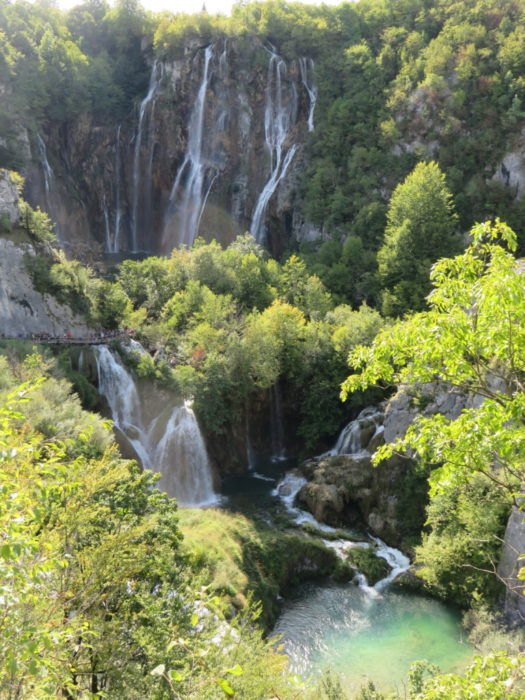
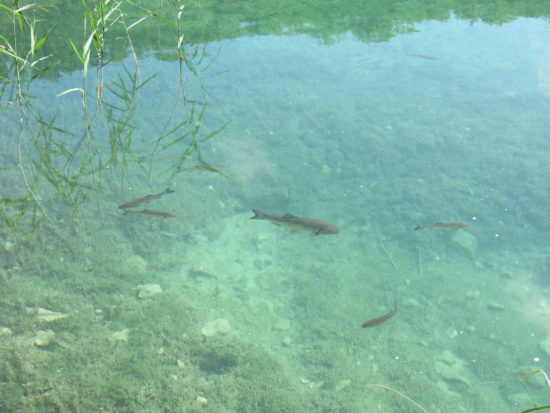
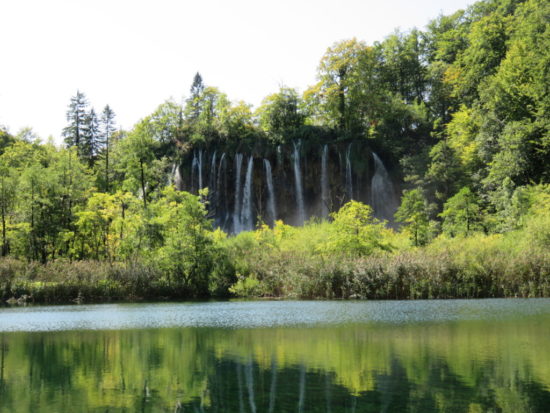
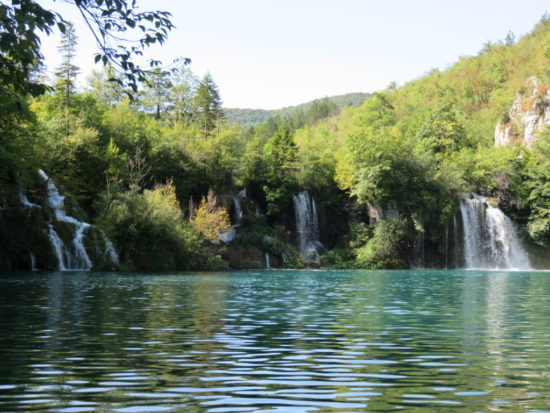

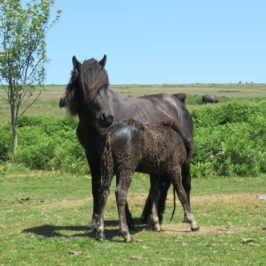
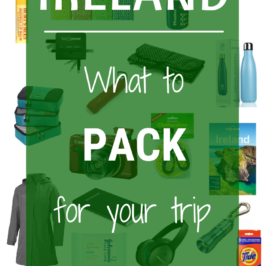
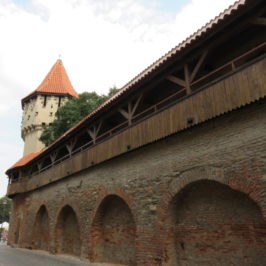
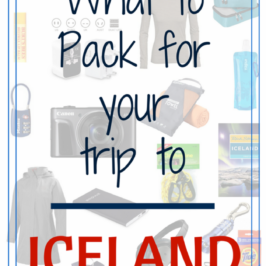
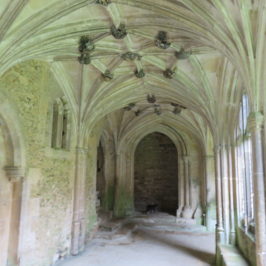
Leave a Reply